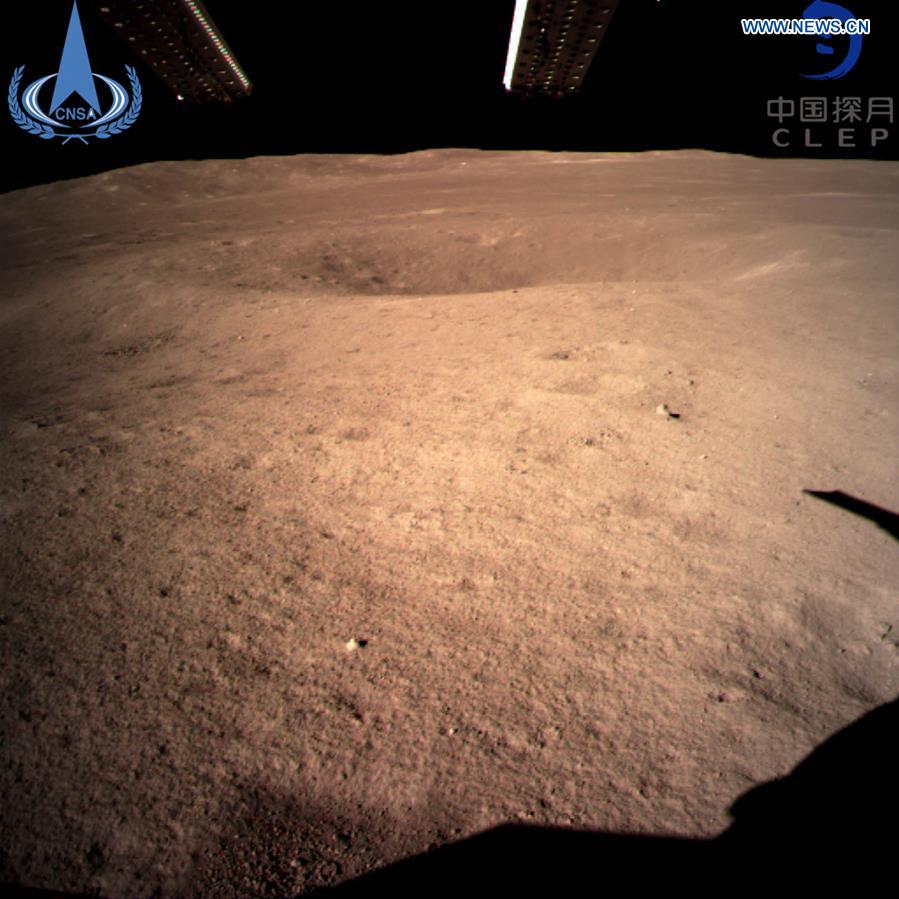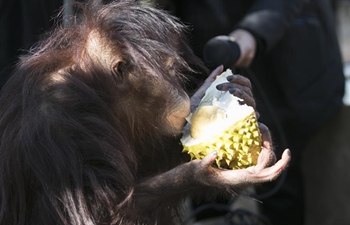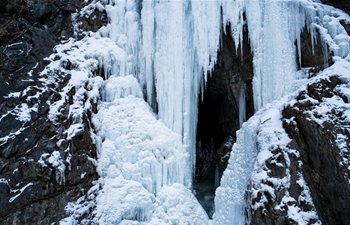
Photo provided by the China National Space Administration on Jan. 3, 2019 shows the first image of the moon's far side taken by China's Chang'e-4 probe. China's Chang'e-4 probe touched down on the far side of the moon Thursday, becoming the first spacecraft soft-landing on the moon's uncharted side never visible from Earth. The probe, comprising a lander and a rover, landed at the preselected landing area at 177.6 degrees east longitude and 45.5 degrees south latitude on the far side of the moon at 10:26 a.m. Beijing Time (0226 GMT), the China National Space Administration announced. (Xinhua)
BEIJING, Jan. 31 (Xinhua) -- China's Chang'e-4 probe, having made the first-ever soft landing on moon's far side, found that the temperature of the lunar surface dropped to as low as minus 190 degrees centigrade, colder than expected.
This is the first time Chinese scientists have received first-hand data about the temperatures on the surface of the moon during the lunar night.
The rover and the lander of the Chang'e-4 probe have been awakened by sunlight after a long "sleep" during their first extremely cold night on the moon, the China National Space Administration announced on Thursday.
As a result of the tidal locking effect, the moon's revolution cycle is the same as its rotation cycle, and the same side of the moon always faces Earth.
"According to the measurements of Chang'e-4, the temperature of the shallow layer of the lunar soil on the far side of the moon is lower than the data obtained by the U.S. Apollo mission on the near side of the moon," said Zhang He, executive director of the Chang'e-4 probe project, from the China Academy of Space Technology (CAST).
"That's probably due to the difference in lunar soil composition between the two sides of the moon. We still need more careful analysis," Zhang said.
A lunar day equals 14 days on Earth, and a lunar night is the same length. The Chang'e-4 probe switched to dormant mode during the lunar night due to a lack of solar power.
Temperatures vary enormously between day and night on the moon. Previously, Chinese scientists had no data on exactly how cold it could be.
At the end of 2013, China launched Chang'e-3, the country's first spacecraft to soft-land on the moon. The scientific instruments on its lander are still operating after more than 60 lunar nights over the past five years.
"It was a success, but Chang'e-3 was designed according to foreign temperature data," said Zhang.
The measurement of the temperature changes between the day and night on the moon will help scientists estimate the properties of the lunar soil, said Zhang.
The rover and the lander carried a radioisotope heat source, which helped keep the probe warm during the lunar night.
The lander was also equipped with an isotope thermoelectric cell and dozens of temperature data collectors to measure the temperatures on the surface of the moon during the lunar night.
Used for the first time in a Chinese spacecraft, the isotope thermoelectric generation technology to transform heat into power on Chang'e-4 is a prototype for future deep-space exploration, said Sun Zezhou, chief designer of the Chang'e-4 probe from CAST.
NASA's Curiosity rover also adopts this power technology, freeing it from the sunshine, sand and dust restrictions that have affected its predecessors Opportunity and Spirit, he explained.
"It is a technology that we must master if we want to go to the moon's polar regions or farther than Jupiter into deep space, where solar power cannot be used as the primary power source," he said.















